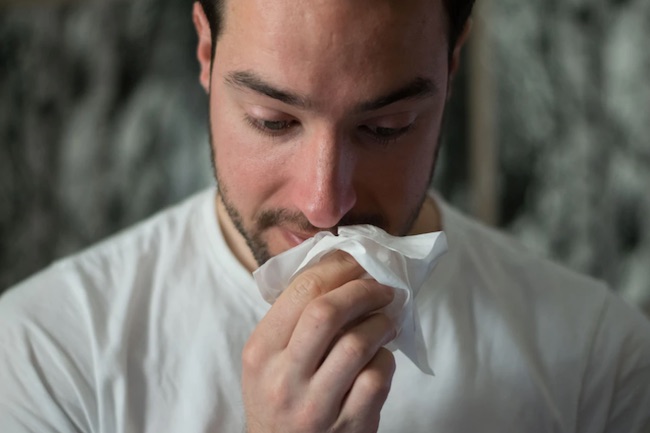9 Common allergy triggers hidden in your home and how to avoid them By Divina Ramirez for Prevention
Dealing with allergies can be quite uncomfortable, especially if you seem to get them year-round. If that is the case, then the culprits may be right inside your home. Many of them aren’t even visible to the naked eye.
If you’re not aware of the allergy triggers lurking in your home, they could negatively affect your quality of life. For instance, if you can’t breathe easily because of those triggers, getting a good night’s sleep could be difficult. You could still feel tired in the morning and be unable to perform at your best throughout the day.
Here are nine indoor allergy triggers that you should look out for: (h/t to Survivopedia.com)
[give_form id="52655"]
- Carpets – Common allergens like pollen and dust can get trapped in carpets. Walking on the carpet can disturb those allergens and sweep them up into the air. Ditch the carpets and opt for allergy-friendly flooring options like hardwood and vinyl.
- Home renovations – Paints, floor lacquers, wood preservatives and other materials used in home renovations can emit harmful volatile organic compounds (VOCs) like benzene and formaldehyde. However, some manufacturers now make low- and zero-VOC materials to minimize those materials’ impact on health and indoor air quality.
- Bathroom mold – The bathroom, being the wettest room in the house, is conducive to mold growth. When inhaled, mold spores can trigger an allergic reaction. To reduce mold and moisture in the bathroom, install a ventilation fan or leave the bathroom door cracked open. If you have a window, open it after a hot shower.
- Dust mites – Dust mites are microscopic bugs that eat the dead human skin cells found in dust. Dust mites thrive in humid environments and don’t bite or sting. Instead, proteins from their feces and the skin fragments they leave behind trigger allergies. Regularly wash your bedding, curtains and rugs to prevent the bugs from burrowing there. (Related: Dust mite allergies: Symptoms, treatments and prevention.)
- Humidity levels – High humidity levels can create mold, which releases spores that trigger allergies. On the other hand, low humidity levels can make the air dry and cause dry, itchy skin, eyes and throat. You can use a humidifier or dehumidifier to control humidity levels. Some houseplants can also help reduce humidity.
- Cleaning materials – Some cleaning agents, particularly spray cleaners, can linger in the air for hours and trigger allergy symptoms. Opt for natural cleaners made with safe ingredients like baking soda, vinegar and essential oils. Your vacuum cleaner could also be a source of hidden allergens. It can pick up dirt and dust that’s visible to the naked eye, but some fine allergy-inducing particles may get recycled back into your home. To prevent this, use a vacuum cleaner with a high-efficiency particulate air (HEPA) filter.
- Ozone gas – Ozone, an air pollutant, can enter the home through natural and mechanical ventilation. Some home appliances can also emit ozone, such as refrigerators, air purifiers and facial steamers. Keep this kind of appliance out of your home if you have allergies.
- Nitrogen dioxide – Nitrogen dioxide is another outdoor pollutant that can find its way inside your home, where it can trigger allergies. Wood-burning stoves, fireplaces and gas stoves can also emit nitrogen dioxide. Improving ventilation in your home is a good way to reduce nitrogen dioxide levels.
- Outdoor allergens – Outdoor allergens like pollen and grass can make their way inside your home by hitching a ride on your shoes, clothes or bag. To keep these allergens out of your home, remove your shoes and coat near the door so that you don’t take them with you




